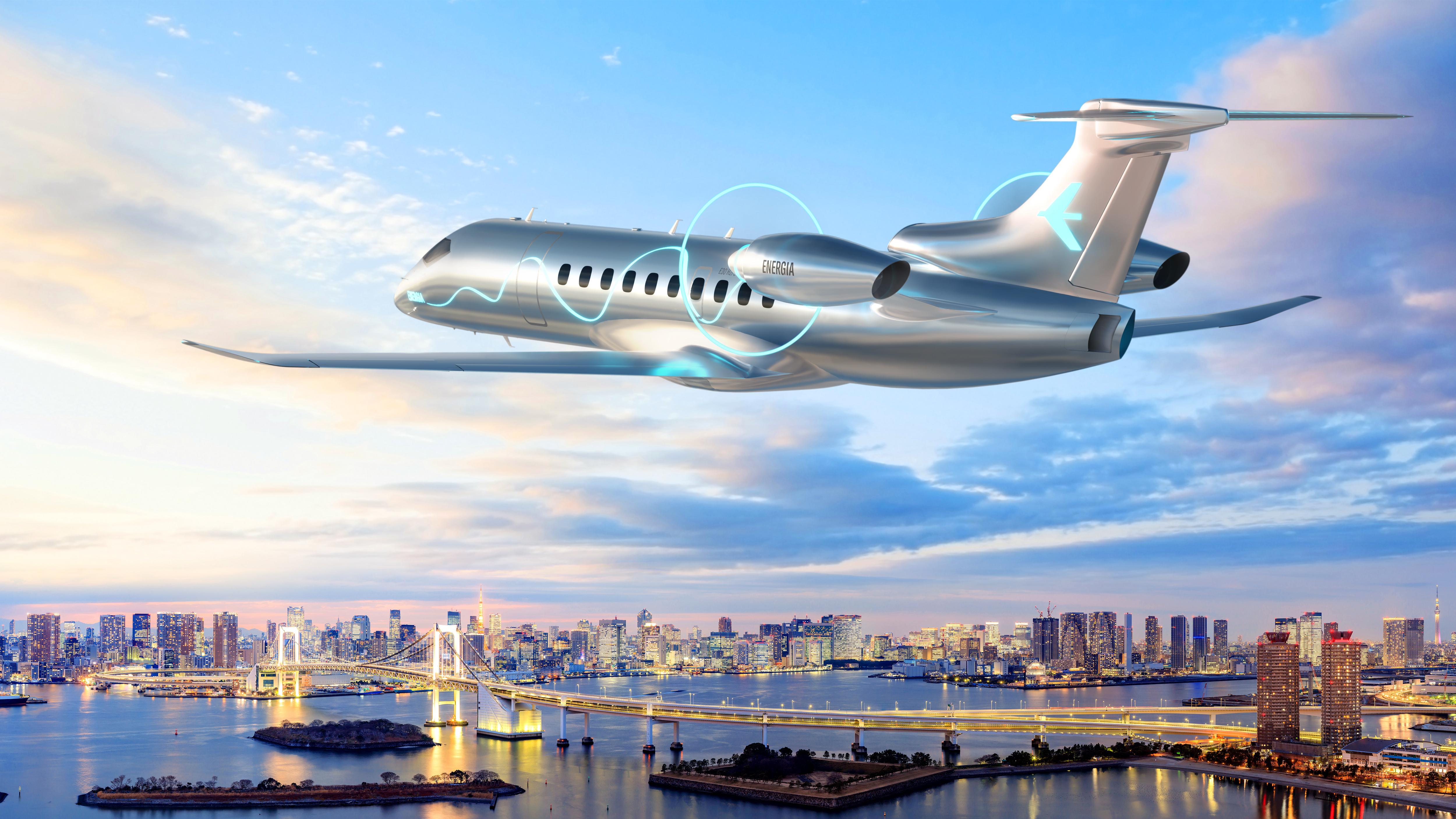
Inlet at base of the vertical tail feeds heat exchangers to cool the fuel cells, which exhaust from the aft fuselage.
Embraer has focused its studies of sustainable aircraft on hybrid-electric and hydrogen fuel cell 19- and 30-seat regional airliners as it moves into a second phase of concept exploration and evaluation under its Energia program.
After studying 20 different concepts, Embraer in November 2021 unveiled a series of four Energia designs with nine-to-50 seat aircraft and all-electric, hybrid-electric, hydrogen (H2)-electric and hydrogen-combustion propulsion options.
After a year of study, the company has focused its evaluation—and discussions with suppliers and customers—on a pair of 19-30-passenger concepts with hybrid-electric and H2-electric propulsion. Smaller exploratory studies of the other nine- and 50-seat Energia concepts are continuing.
“The 19-30-seaters are a sensible starting point for focused studies, since they are likely to present earlier technical and economic readiness,” says Luis Carlos Affonso, Embraer SVP of engineering, technology development and corporate strategy.
The Energia Hybrid concepts, E19-HE and E30-HE, could be ready to enter service in 2030 and the Energia H2 Fuel Cell concepts, E19-H2FC and E30-H2FC, in 2035, says Rodrigo Silva e Souza, VP of marketing for Embraer Commercial Aircraft.
The Energia Hybrid has parallel hybrid-electric propulsion, with thermal engines optimized for cruise and electric motors providing a power boost for takeoff and climb. This avoids the cost and weight of large batteries. Engines are mounted on the rear fuselage to reduce cabin noise and allow a clean wing.
The Energia H2 Fuel Cell has hydrogen tanks and fuel cells mounted in the aft fuselage close to the electric motors housed in the rear-mounted nacelles to minimize cable lengths and weight.
Fuel cells are more efficient than small turbine engines but are heavier and generate a lot of heat. The aircraft has a large inlet at the base of the vertical tail that feeds cooling air to heat exchangers. The thermal management system is designed to reduce drag and provide some thrust in cruise.
The Energia Hybrid has a design range of 500 nm plus reserves, compared to 200 nm-plus for the H2 Fuel Cell. The Hybrid reduces emissions by 90% with sustainable aviation fuel powering the thermal engine. The H2 Fuel Cell has zero CO2 and NOx emissions and lower contrail generation, Embraer says.
While evaluating the Energia concepts, Embraer has been studying the market potential for sustainable regional aircraft. The company has forecast demand to 2035 based on three different scenarios: substitution, evolution and revolution. “We are convinced there is significant potential,” Souza says.
The forecasts are for unconstrained demand and do not take into consideration limiting factors such as production ramp-up. The first scenario is based on simple replacement of the parts of the aircraft fleet plus some natural growth, he says, and produced an estimated demand for 4,000 aircraft by 2035.
The second, evolutionary forecast scenario takes into account the expected lower operating costs of the Energia aircraft and their sustainability benefits and assumes some operators could accelerate replacement of their fleets. The result is an estimated demand for 7,000 aircraft.
The third and most extreme forecast scenario considers potential new users—such as a small portion of people now driving cars moving to point-to-point flights in smaller aircraft—and estimates demand could increase to 20,000 aircraft by 2035.
Factors that could drive demand, Souza says, include the need for sustainability, the trend to regionalization and away from globalization, volatile fuel prices and increasing carbon costs, and the increasing expense of adding infrastructure for surface transport versus using existing airports.
While airport infrastructure is well established in Europe and the U.S., he says, the need to develop airport networks in other parts of the world is one of the challenges to achieving the forecast demand identified by Embraer.
The other challenges include pilot availability, particularly in North America; operator willingness to adopt new technology; and the need for electrical charging and hydrogen refueling infrastructure.
Operator willingness will depend on total cost of operation and performance characteristics of the aircraft. “It needs to have significant range to be able to provide operators with the needed flexibility,” Souza says.
Now completing the first phase of Energia concept exploration and evaluation, Embraer is moving into a second phase, under which it will continue working with airline partners to progress toward a potential future product, says Arjan Meijer, president and CEO of Embraer Commercial Aviation.



